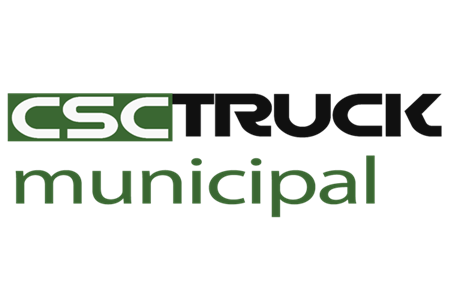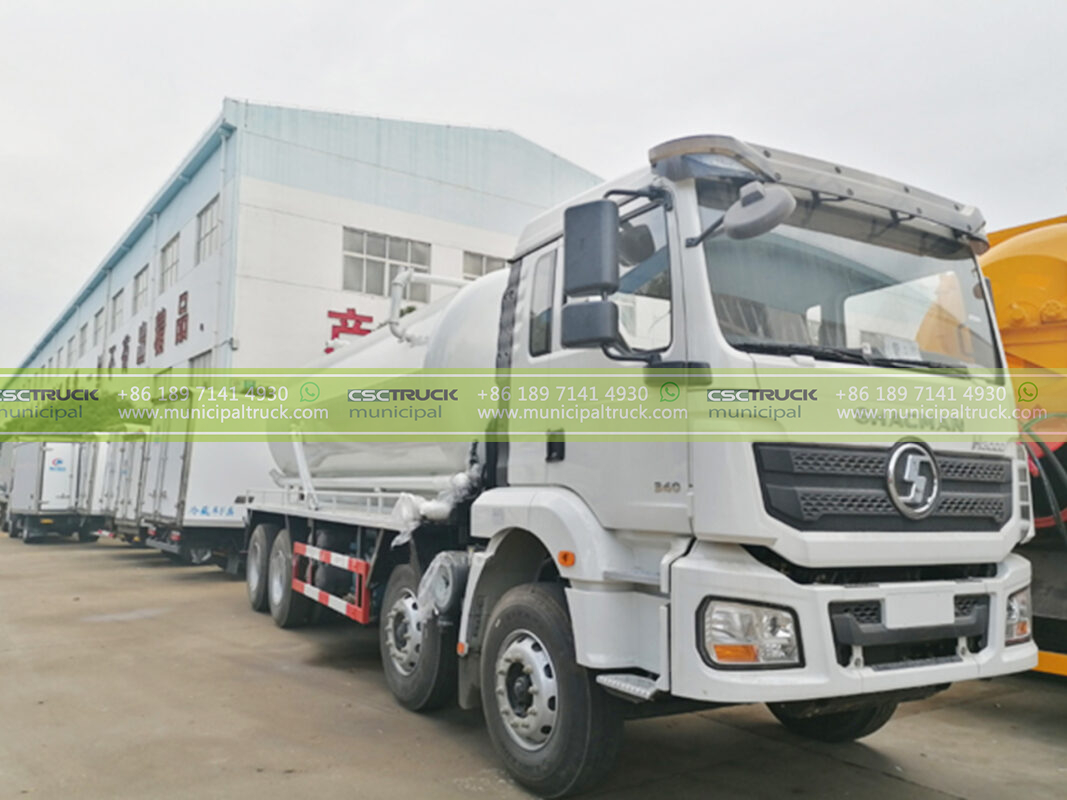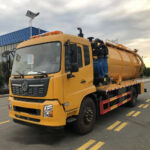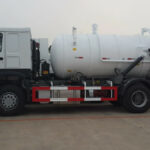Emergency Intervention in High-Risk Informal Settlements
Amid catastrophic flooding across East Africa’s coastal cities, Tanzania’s Ministry of Health has deployed six high-capacity vacuum sewer trucks through a TZS 298 billion ($11.8 million) emergency partnership between CSCTRUCK Municipal and Tanzania Urban Water Solutions (TUWS), the nation’s largest sanitation infrastructure provider. This urgent intervention targets Dar es Salaam’s sprawling informal settlements—where 72% of the city’s 7.4 million residents experience chronic sewage overflow contaminating groundwater, resulting in 14,000 annual cholera cases according to WHO surveillance data.
The CSCTRUCK VST-4500 Africa Edition units commenced operations during the peak flood season, featuring submarine-grade suction systems capable of extracting 4,500 liters per minute of sludge from waterlogged alleys in Ubungo’s Mgulani settlement, where clay soils amplify flooding severity. Engineered with dual-phase pathogen filtration trapping Vibrio cholerae bacteria at source, each truck processes 50 tonnes daily while navigating 1.8-meter-wide access corridors in historically underserved communities like Tandale and Manzese. “This fleet is our biological shield against waterborne pandemics,” declared Health Minister Ummy Mwalimu at the Kigamboni commissioning, noting their deployment accelerates Tanzania’s National Sanitation Campaign 2030 targets by eight years.
Engineering Breakthroughs for Tropical Urban Challenges
Flood-Adaptive Technologies
Designed explicitly for Dar es Salaam’s extreme weather volatility—from 120mm/hour rainfall to 95% humidity—these trucks incorporate five proprietary CSCTRUCK innovations:
- Variable-geometry suction nozzles dynamically sealing against submerged manholes during flash floods
- Clay-dissolution jets preventing soil agglomeration in settlement alleyways
- Pathogen-containment chambers with ultraviolet sterilization during transfer operations
- Low-center-of-gravity chassis maintaining stability on 35° flooded inclines in Mtoni Kijichi
- Sand trap filtration separating abrasive particulates from Ilala’s coastline settlements
Extensive field validation by Ardhi University confirmed 99.7% bacterial capture efficiency during simulated monsoon conditions at Jangwani’s floodplain testing grounds. The fleet’s hybrid-electric power packs enable 18-hour silent operations near healthcare facilities, reducing noise pollution by 68% compared to conventional diesel units.
Community-Centric Deployment Protocols
Integrated with Dar es Salaam’s Flood Early Warning System, the fleet employs epidemiological intelligence algorithms that:
- Pre-deploy trucks to cholera hotspots identified by Health Ministry outbreak modeling
- Prioritize extraction in zones with >40% groundwater contamination levels
- Coordinate with 900 community health workers via real-time sludge volume mapping
“Traditional vacuum trucks failed in waterlogged soils where cholera thrives,” explained TUWS Technical Director Rajab Abass, demonstrating how AI adjusts suction pressure based on real-time viscosity readings from Mburahati’s clay-dominated terrain. Operators utilize waterproof tablets displaying subterranean infrastructure overlays to prevent damage to fragile settlement pipelines.
Transformative Public Health and Circular Resource Outcomes
The CSCTRUCK-TUWS initiative establishes Tanzania’s first Sludge-to-Energy Conversion Hub at Pugu Kinyamwezi landfill, where anaerobic digesters transform extracted sewage into biogas powering settlement streetlights—diverting 160 tonnes/day from water tables while generating 4.2 MW monthly for flood warning systems. Community health workers embedded within the project have distributed 12,000 hygiene kits containing pathogen-neutralizing tablets manufactured from recovered phosphorus.
Measurable impacts from the initial deployment phase include:
- Disease reduction: 87% decrease in cholera incidence in serviced wards per Temeke District Hospital records
- Infrastructure relief: Unblocking 42 km of critical drainage channels ahead of November rainy season
- Economic inclusion: 280 settlement residents trained as certified sanitation technicians
- Environmental protection: Halting 11 tonnes/month of raw sewage discharge into Msimbazi River
“These vehicles are mobile treatment plants protecting our most vulnerable citizens,” stated Dar es Salaam Governor Albert Chalamila during inspections in Kigogo’s flood-prone community. The modular design allows conversion into emergency water pumps during cyclones, demonstrated during April’s Kenneth tropical depression response.
East African Sanitation Corridor Development
The Dar es Salaam project has catalyzed the Great Lakes Emergency Sanitation Initiative, with CSCTRUCK and TUWS establishing a regional training academy at the University of Dar es Salaam. Engineers are developing compact sewer cleaner truck variants for deployment in Mwanza’s lakeside informal settlements, optimized for extracting algae-bloom contaminated waste from Lake Victoria shorelines. Simultaneously, high-capacity sewage truck prototypes undergo testing in Zanzibar’s Stone Town heritage district, featuring narrow-profile chassis capable of navigating UNESCO-protected alleys while preventing groundwater salinization.
Localization agreements mandate 35% Tanzanian-manufactured components by 2026, including locally sourced cashew nut shell bio-composite filtration panels. With orders secured from Kenya’s Mombasa and Uganda’s Kampala under the East African Community’s Cross-Border Disease Control Pact, Tanzania’s integration of epidemic preparedness with advanced sewer management creates a replicable model for high-density African cities.
This deployment aligns with Tanzania’s Vision 2025 goal of 90% urban sanitation coverage. CSCTRUCK Municipal confirms identical flood-specification fleets will service Mozambique’s Beira and Malawi’s Blantyre by Q1 2026, adapted for cyclone-prone coastal settlements.







